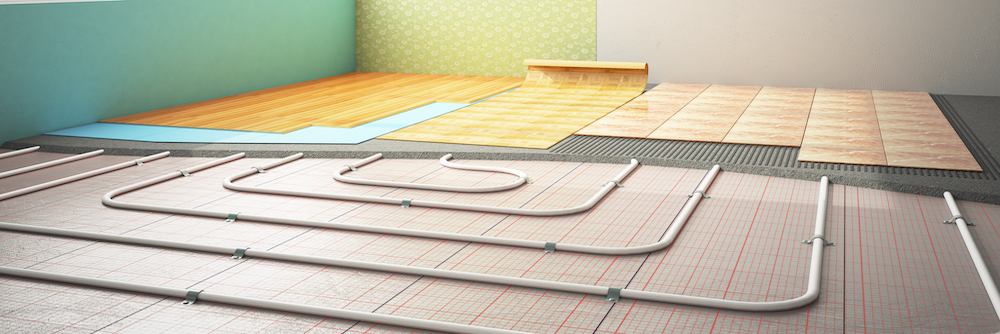Warmafloor: Adding the wow factor using Cinema 4D//


Background to the project
Having successfully rebranded and relaunched under floor heating company, Warmafloor, in just 15 weeks, earlier this year – with everything from stationery and vehicle livery to a new digital presence – the only element left untouched, and looking rather tired by comparison, was their collection of 20 system diagrams.
Previously created using an amalgam of different styles and drawing techniques, the imagery simply didn’t reflect the products, materials or specifications that they use today. So, when we were approached with a project to bring these in line with the new branding, we saw an opportunity to deliver something much more visually engaging than the bland industry norm.
Our brief
Our brief was to create a set of illustrations that would not only look amazing in literature and on the Warmafloor website, but that could also be utilised in AutoCAD by their engineering team. Satisfying all their needs proved a tall order, and although possible, it was not achievable with the version of software they had. So, after several exhaustive attempts to be all things to all people, we agreed to produce the illustrations using Cinema 4D for print and web.
Cinema 4D gave us maximum flexibility to create high-quality, almost photographic, final images which would be visually stunning as well as technically accurate.
Our approach
Research began by delving into a world of diffusion plates, composite blending manifolds, crack-induced saw cuts and screed vs suspended floor constructions – to try and understand how each system worked and the materials used in building it. The client also supplied us with a number of real components to use as a visual reference.
Once we had a better understanding of the individual parts and the various systems, we created a kind of hybrid test model which incorporated parts from several different systems.
A good amount of research prior to creating the model paid off, as after only one simple adjustment – to brighten the brand colour of the UFH pipe – we were given the green light to develop the other twenty illustrations.
Final production
Each system illustration was built from scratch as a separate Cinema 4D model. All models were built to the same scale and then textured with a combination of royalty-free imagery and our own in-house photography. Once test images had been approved, we rendered each one to A3 size in high-resolution, and final retouching in Photoshop enabled us to unify and polish each image to maximum effect. Some systems were more complex than others. None more so than the Composite Blending Manifold which contains over 400 objects, each modelled and textured from scratch.
The finished results
Here are a few of the final illustrations and some detailed close-ups of the finished 3D models. We hope you agree that the finished images are both technically adroit as well as visually beautiful. Our client’s reaction to them was a simple but satisfying ‘Wow that’s impressive!…’
Indeed, Warmafloor were so pleased with the results, they asked us to create some large-scale versions to decorate the walls of their new offices.

Do you have a similar project?
If you like what you’ve seen and would like us to give your company’s illustrations the wow factor, get in touch today.
Why we chose to use Cinema 4D for this project?
Cinema 4D allows you to create photorealistic imagery that is simply not possible using a real-world set up. It would have been impractical and costly to physically build each system set from heavy concrete, sand and metal and then photograph them. Also, once a photograph is taken and the set dismantled, there’s no going back to change the camera angle, the lighting or any of the product detail without extensive retouching. Cinema 4D allows you to do all of this, so in the future we would be able to swap out individual products within a system, zoom in on a specific area, change the camera angle, change the lighting, change the reflections within objects, and change the materials the objects are made from – all with minimum effort to create a revised image at minimum cost to the client.